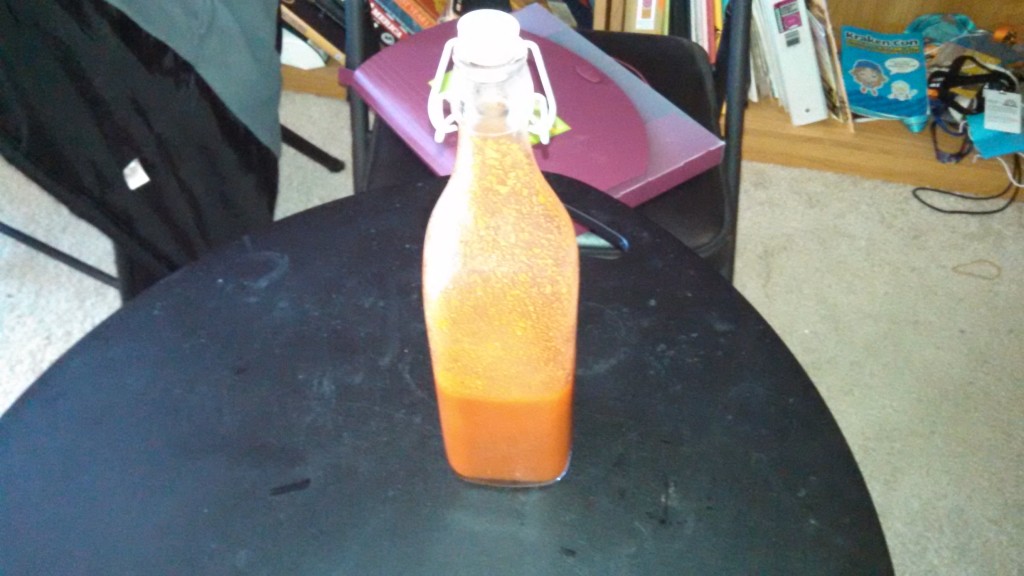So before I go into detail about this recipe, let me give it to you first. Essentially I repurposed a recipe to make a general curry, it needs work, but it’s a start.
So here you go:
Ingredients:
- 1 large tomato, diced (about a cup)
- 1 Tablespoon crushed garlic (about 3 cloves)
- 2 Tbsp curry powder (S&B Curry)
- 1/8 tsp ground black pepper
- 1/8 tsp ground red pepper
- 1/2 tsp salt
- 2 Tbsp lime juice
- 4 cups assorted diced non-starchy vegetables
- 4 cups assorted frozen or cooked legumes
- Around 1/2 cup of water
- Cilantro if needed.
Instructions:
- Place tomato and garlic in pot, with just enough water to cover the bottom. On high heat stir and mash until it forms a paste, adding water if needed. The goal is to keep just enough water to make it into a paste but not dry-fry it. This takes around 5 minutes.
- Add any vegetables or frozen vegetables that need cooking to soften like carrots or peppers or cauliflower (some frozen vegetables are cooked then frozen so pay attention). Add a bit more water, enough to have the bottom of the pot covered. Bring to a boil, then simmer, covered, stirring every few minutes until they start to soften.
- Add legumes and any vegetables that don’t need to be cooked, just defrosted, mix thoroughly.
- Add spices and stir thoroughly.
- Cook until heated through.
- Serve alone or with a grain, with cilantro if desired.
So this is a repurposed version of a green pea and yam curry I had that was very simple but tasty, so I wondered if it could be remade to a general curry. If I could get a general curry recipe that’d let me use most anything I had, it’d be very useful and tweakable. It also would create a general recipe that would let me, or anyone else, use whatever was lying around, or use a few frozen vegetables grabbed at a store.
The name comes from the fact it’s designed to use eight cups of food – half legumes, half other vegetables. The original recipe worked that way too.
How did it come out? Decent. It was a bit too hot (an issue with the original recipe) and sour, but still quite good – one of those things that I can critique while still noting it’s good. At the core of it is a solid curry powder and simple ingredients, which works. I was put in mind of a kind of curry at a good buffet – you might not be thrilled if it came as a prepared meal, but it’d be acceptable in that situation.
I think I can make it work with a few changes – something sweet (an apple or raisins in the sauce), perhaps a bit less lime juice, maybe cut the red pepper.
One thing that stood out in this meal is what the mix did – I had four different vegetables (carrot, red pepper, cauliflower, green beans) and two legumes (green peas and black eye peas), plus I served it on barley (my preferred grain). Every bite was a mix of flavors, each chew revealed more – all wrapped in strong sauce. Once I get this right, this is going to be a great meal.
Also note it’s rather balanced. Combine this with a grain and fruit for desert and you’ve got just about every kind of vegan nutrition there is. Or eat two servings for a full meal.
Not a vegan or vegetarian? I think substituting 1-2 cups of meat for an equivalent amount of vegetables may work. Not sure beef would work on this – chicken or turkey is probably best.
I’m going to keep working on this one. Done right I get something that’s fast, shareable, and good – and because it’s based on proportions I can scale it up easily (even if that’d technically be sixteen cup curry or twenty-four cup curry). A great way to make a lot of meals at once or a lazy way to stock the freezer for a lot of food fast.
Respectfully,
– Steven Savage
http://www.musehack.com/
http://www.informotron.com/
http://www.seventhsanctum.com/
